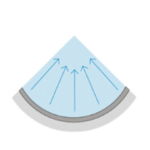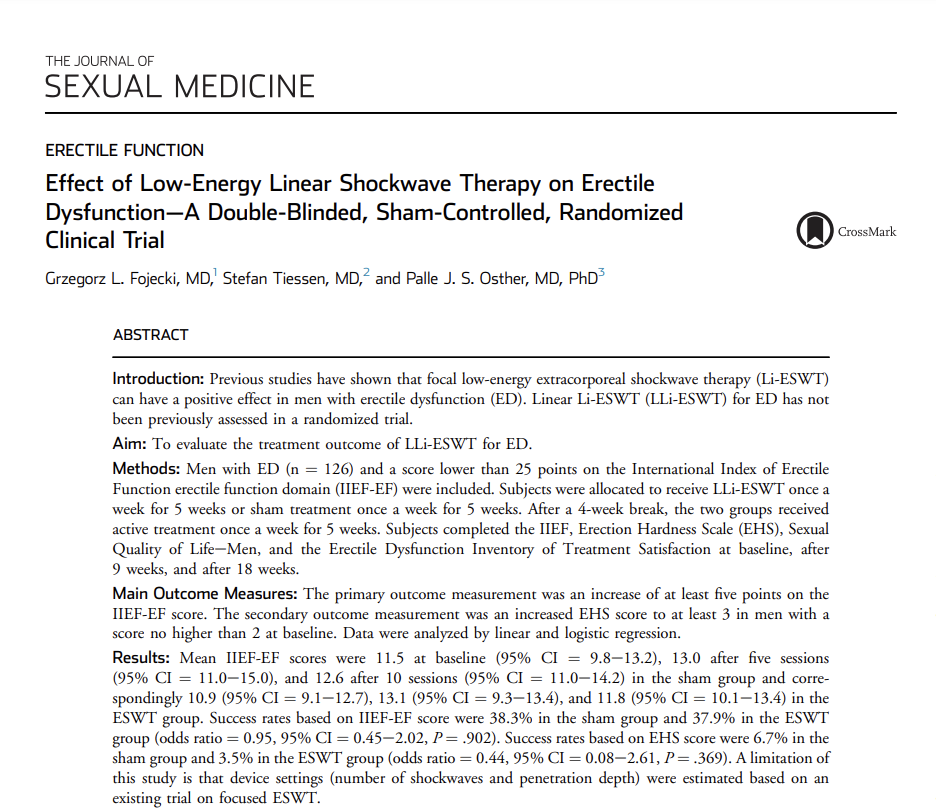How Storz Medical Came to be the Global Market Leaders for Men’s Health Shockwave Treatment
In the continuously evolving landscape of healthcare, practitioners are always on the hunt for effective treatments for widespread conditions like erectile dysfunction (ED) that significantly affect men’s health and quality of life. Although various treatment methods have been developed over the years, such as medication, injections, and surgical options, non-invasive techniques have gained significant attention. Shockwave therapy stands out among these as a promising solution in treating ED.
With over 50,000 devices sold, 200 design patents, 3 design awards & use in over 100 publications, Storz Medical manufactures the most popular, technologically advanced and successful shockwave systems in the world.
This article aims to explain one example of why that is.

All Shockwaves are Equal (But Some are More Equal than Others)
Focused shockwave therapy devices come in two main types – piezoelectric and electromagnetic shockwave therapy. There is a third type, called electrohydraulic, but this is less common and less researched. Both piezoelectric and electromagnetic devices have previously shown potential in treating ED, but recent studies suggest that the electromagnetic approach might be the superior of the two. Here we compare these methods and provide a detailed examination of why electromagnetic shockwave therapy may be a more effective treatment for ED.
Understanding Shockwave Therapy for ED
Shockwave therapy uses high-energy sound waves to stimulate tissue regeneration and enhance blood flow in the penis. As a non-invasive treatment, it has demonstrated potential in improving erectile function, promoting the formation of new blood vessels (neovascularization), and enhancing the repair of penile tissues.



Clinical Effectiveness in Treating ED
While both piezoelectric and electromagnetic shockwave therapies have shown promise in treating ED, recent studies have highlighted the distinct comparative advantages of using electromagnetic shockwave therapy.
Clinical Evidence
This study examined the impact of piezoelectric shockwave therapy on erectile dysfunction in a randomised trial. A total of 126 men suffering from ED were enlisted and divided into two groups. Each participant underwent shockwave therapy or a sham treatment once weekly for five weeks, followed by a break of four weeks, and then another five weeks of treatment.
The primary outcome was an increase of at least five points on the International Index of Erectile Function erectile function domain (IIEF-EF) score. The secondary outcome was an improved Erection Hardness Scale (EHS) score of at least 3 in men who had a baseline score no higher than 2. The results did not demonstrate a significant effect of piezoelectric shockwave on ED, with success rates based on IIEF-EF score being 37.9% in the shockwave group and 38.3% in the sham group. Furthermore, success rates based on EHS score were 3.5% in the shockwave group and 6.7% in the sham group.
The results indicated that piezoelectric shockwave therapy was ineffective in treating ED, as there was no significant difference in erectile function between the two groups. This strengthens the growing body of evidence supporting electromagnetic shockwave therapy’s superiority.
Several other high-quality studies have demonstrated that electromagnetic shockwave therapy is a powerful and safe method for enhancing erectile function. Notable among these are studies by Ayala et al. (2017), Chung et al. (2015), Olsen et al. (2015), and Tsai et al. (2017).

Depth of Penetration
One advantage of electromagnetic shockwave therapy is its ability to penetrate deeper into the body compared to piezoelectric shockwaves. The focused shockwaves generated by the electromagnetic coil can reach the cavernous bodies of the penis, which play a crucial role in achieving and maintaining an erection. This deeper penetration enhances the therapy’s effectiveness in addressing the underlying causes of ED.
Conclusion
In the treatment of erectile dysfunction, electromagnetic shockwave therapy offers distinct advantages over piezoelectric shockwave therapy. Its ability to penetrate deeper into the body, precision in energy delivery, higher treatment intensity, and the growing body of clinical evidence all point to its superiority. As we continue to understand more about these therapies, it’s clear that electromagnetic shockwave therapy could play a significant role in advancing ED treatment. It offers a beacon of hope for those seeking non-invasive, effective solutions.
References
- Ayala, H.A.C., Cuartas, J.P.S. and Cleves, D.C., 2017. Impact on the quality of erections after completing a low-intensity extracorporeal shock wave treatment cycle on a group of 710 patients. Advances in Urology, 2017.
- Chung, E. and Cartmill, R., 2015. Evaluation of clinical efficacy, safety and patient satisfaction rate after low‐intensity extracorporeal shockwave therapy for the treatment of male erectile dysfunction: an Australian first open‐label single‐arm prospective clinical trial. BJU international, 115, pp.46-49.
- Fojecki, G.L., Tiessen, S. and Osther, P.J.S., 2017. Effect of Low-Energy Linear Shockwave Therapy on Erectile Dysfunction—A Double-Blinded, Sham-Controlled, Randomized Clinical Trial. The Journal of Sexual Medicine, 14(1), pp.106-112.
- Olsen, A.B., Persiani, M., Boie, S., Hanna, M. and Lund, L., 2015. Can low-intensity extracorporeal shockwave therapy improve erectile dysfunction? A prospective, randomized, double-blind, placebo-controlled study. Scandinavian journal of urology, 49(4), pp.329-333. (Incomplete)
- Tsai, C.C., Wang, C.J., Lee, Y.C., Kuo, Y.T., Lin, H.H., Li, C.C., Wu, W.J. and Liu, C.C., 2017. Low-intensity extracorporeal shockwave therapy can improve erectile function in patients who failed to respond to phosphodiesterase type 5 inhibitors. American Journal of Men’s Health, 11(6), pp.1781-1790.